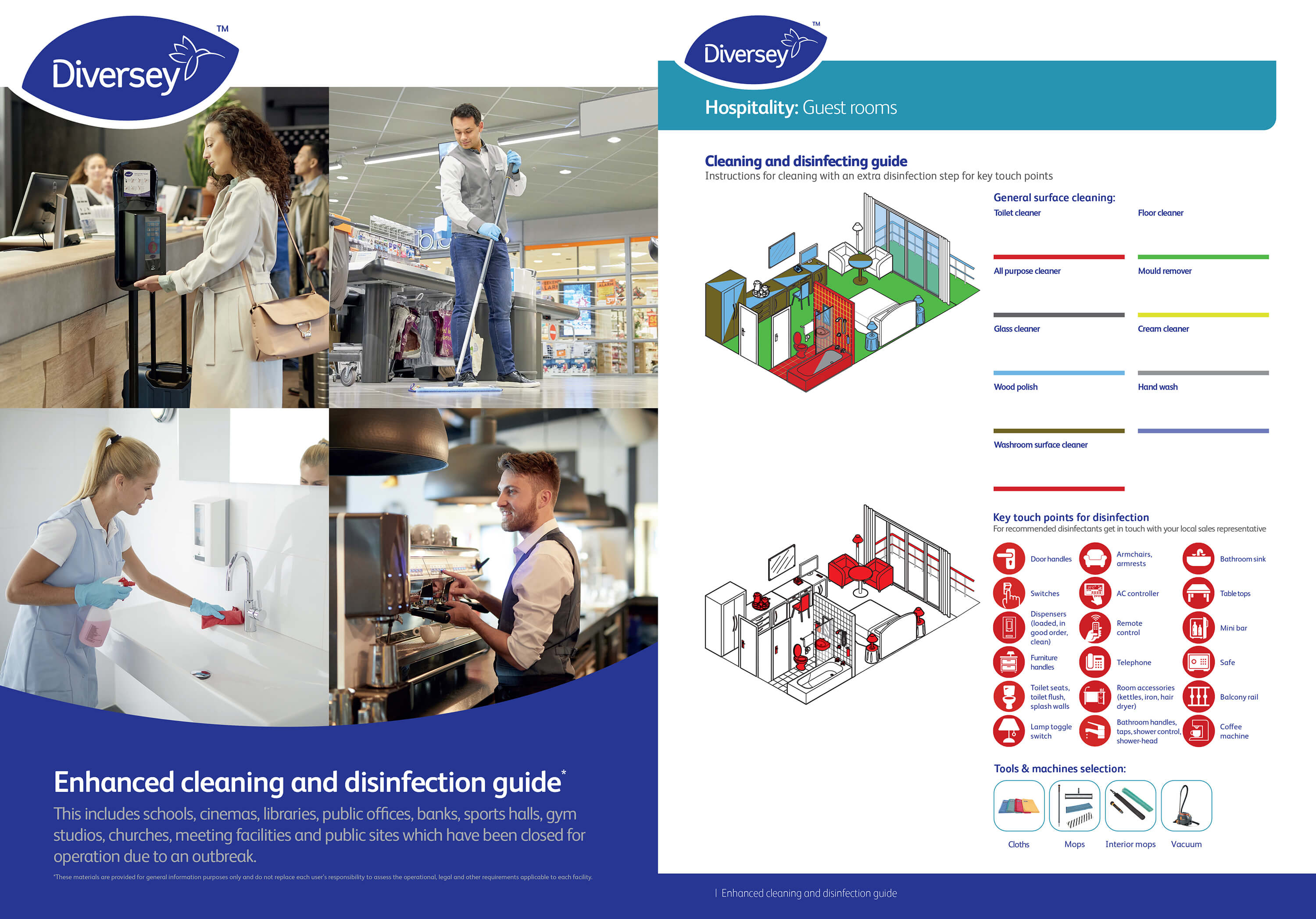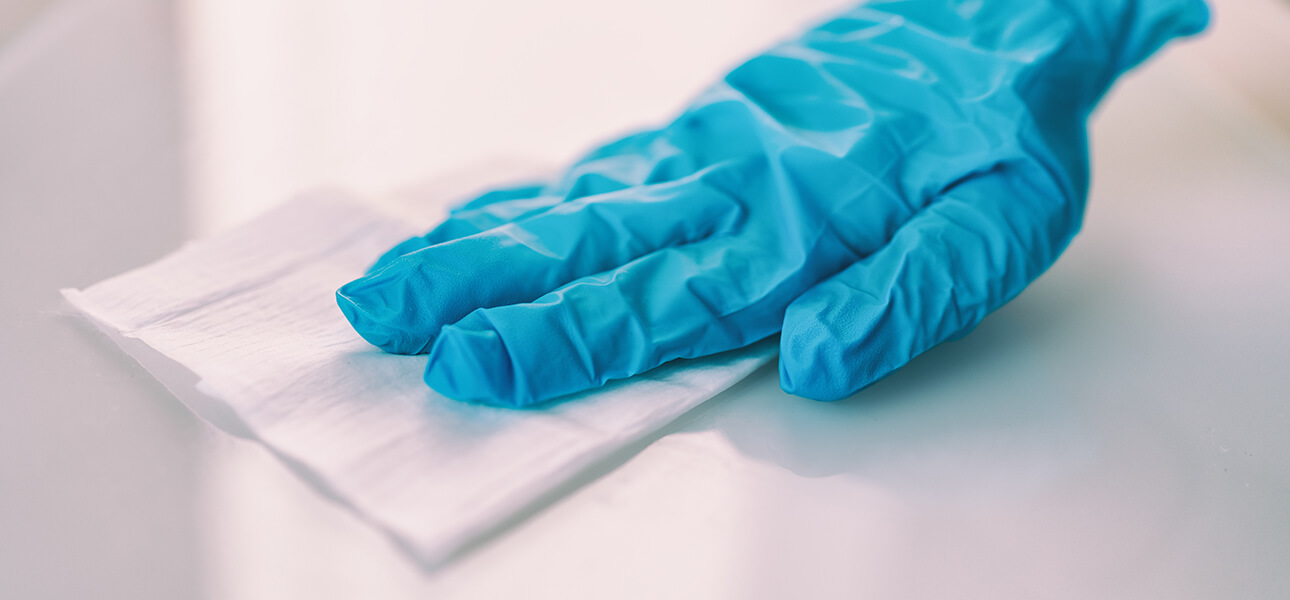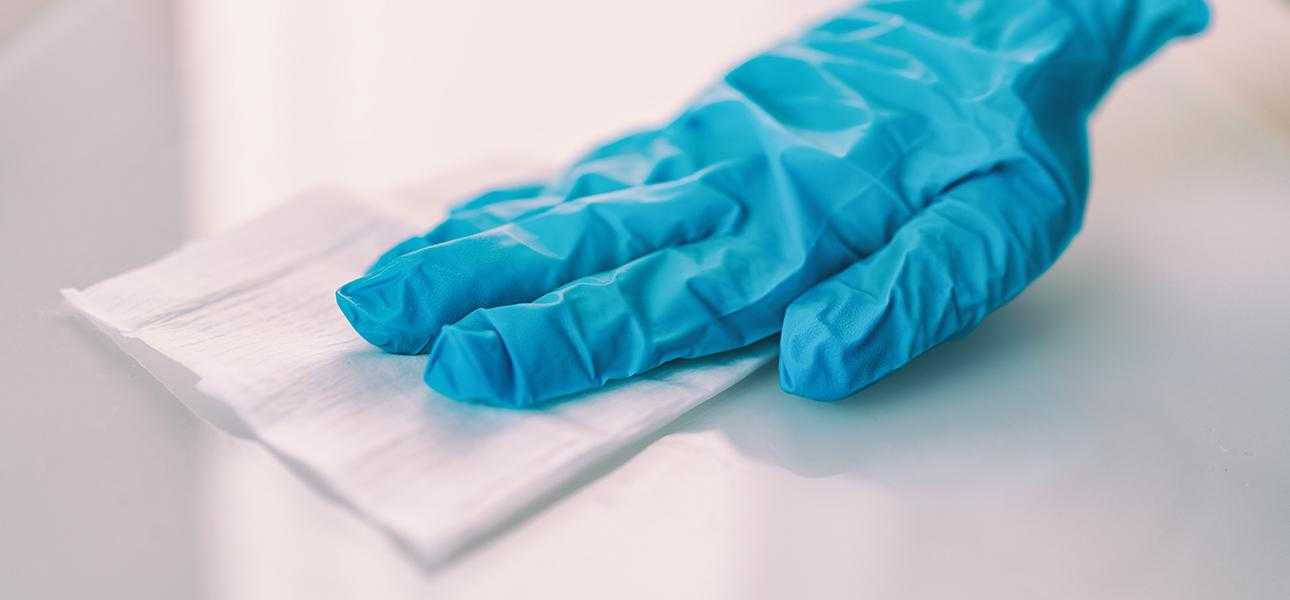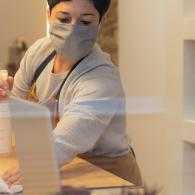The novel coronavirus pandemic has brought about a new standard for facility hygiene. As the world recovers, businesses need to protect staff and customers during and after reopening. Building service contractors (BSCs) and facility managers should review current practices, products and tools. Before implementing new processes, review your hygiene standards with industry experts who can help ensure the appropriate level of surface hygiene - cleaning, sanitizing and disinfecting – is identified for each surface.
Cleaning vs. Sanitizing vs. Disinfecting
Though these words are often used interchangeably, there are important differences between cleaning, sanitizing and disinfecting. Cleaning removes soil from a surface, but makes no specific claims about killing disease-causing organisms. Cleaning assumes that the process will remove many of the organisms on the surface, but assumes small numbers of organisms after cleaning would be acceptable. Sanitizing kills surface bacteria to help ensure that there are very low levels of disease-causing bacteria left on surfaces, but makes no claims about fungi or viruses. Disinfecting has the power to kill bacteria and fungi and inactivates viruses and at a much higher level than sanitizing. Sanitizing provides a 3-log reduction to bacteria and disinfecting provides a 6-log reduction, with each log being a factor of 10.
In other words, after cleaning there may be organisms left on the surface, but the surface may have an acceptable level of hygiene for certain uses. The concern is more about soil removal than eliminating a certain level of organisms. Sanitizing is used when there is a higher level of concern on the surface. If there were 1,000 bacteria on the surface prior to sanitizing, there would only be a few after sanitizing. For disinfecting, if there were 100,000 bacteria on the surface, there would only be a few after disinfecting.
Anytime there is visible or “gross soil” on a surface, employees must first clean before disinfecting or sanitizing. When disinfecting a surface, you can use a disinfectant to clean, but must apply it twice, first to clean and then to disinfect. Using a disinfectant that has been through a standardized test method allows you to clean and disinfect in one step when there is no visible soil on the surface and when allowed by the product label. Check the label to confirm it is a one-step product. The same considerations also apply to sanitizing non-food contact surfaces.
Some disinfectants are also labelled to be used as a sanitizer. Sanitizing with disinfectants may be achieved by using a different dilution (for a concentrate), a different contact time or when used on soft surfaces (if allowed by the product label). Knowing the nuances of how a certain product should be used to achieve a desired outcome is key to optimizing the performance of sanitizers and disinfectants.
Facilities Implement Different Technology and Tools
When pandemics occur, organizations are under pressure to show that they are doing something different to protect patrons and employees. But different does not always mean the new method is better. For example, one Hong Kong airport is testing full-body disinfection booths at entrances.[1] However, spraying disinfectant on hands and skin will do nothing to prevent the virus from entering the building and may cause health issues.
Electrostatic sprayers (ESS) are also in high demand from organizations that want to apply disinfectant to a large area at once. Companies such as Marriot International are testing this equipment to clean quickly.[2]
However, the reality is that many people are not properly disinfecting when using an ESS or are creating additional health risks for staff. Consider the following potential errors and issues:
- Not applying enough product. Users must apply solution in a thick enough layer to keep the product wet for the duration of its contact time as stated on the product label. Making one fast pass with an electrostatic sprayer may not release enough liquid to meet the label contact time. For a two-square metre area, it may take 20-30 seconds of continuous back and forth spraying to apply enough product for a 5-minute contact time disinfectant under typical environmental conditions.
- Not wiping after the contact time is met. The mechanical action of wiping further adds to the overall efficacy of the process, physically removing several logs of organisms. Wiping also removes product before it builds up on the surface, which can make disinfecting more difficult and cause surface discoloration or damage over time.
- Spraying too close to electrical equipment vents. Professionals need to be wary of spraying near electric equipment, as spray droplets can enter vents and potentially cause issues with a wide range of electrical equipment.
- Using the wrong chemicals. Not all disinfectants are appropriate for use in an ESS. ESS can produce small droplets that can be inhaled deep into the lungs, which can create health and safety risks for the worker. Before using an ESS, the facility should conduct an exposure risk assessment to ensure the staff can use the ESS safely. Some chemicals, such as chlorine bleach, have the potential to create a significant risk when sprayed through an ESS and should not be used.
An exposure risk assessment may dictate the use of personal protective equipment (PPE) for staff when using an ESS. This would involve PPE fit testing and oversight to ensure employees wear it properly. Given these points, BSCs and facility managers should be appropriately cautious when selecting new equipment.
Best Practices for BSCs and Facility Managers
When choosing a disinfectant, there are a number of features to consider:
- Check that the product is approved for the pathogens of concern. For COVID-19, the disinfectant needs to be able to inactive SARS-CoV-2. The manufacturer needs to be able to make claims against the virus.
- Purchase a one-step disinfectant with a shorter contact time – preferably five minutes or less. Cleaning and disinfecting in one step will accomplish your goal without sacrificing performance and a short contact time helps ensure the product is used in compliance.
- Look for a product range that offers solutions in wipe, concentrate and ready-to-use formats to meet a variety of needs. Not all product forms are appropriate for all situations. Having flexibility in how the product is applied is important.
- The best products are gentle on skin and surfaces while tough on pathogens. Look for products with accelerated hydrogen peroxide that offer high efficacy and low toxicity.
Once you’ve selected products, conduct training to avoid common cleaning and disinfecting mistakes. For example, skipping the pre-cleaning phase when there is gross soil or ignoring the disinfectant contact time will impact efficacy. Mandate that employees follow the manufacturer’s instructions and keep surfaces wet for the full duration of the contact time.
Failing to wipe the surface is another common mistake. The cleaning process selected should include physical wiping of surfaces.
Consider supplying staff with microfiber or cotton cloths, or disposable wipes, as disinfectants can bind with certain materials. Be sure to train employees to follow proper cleaning procedures to avoid cross contamination or equipment and surface damage.
If you choose to use electrostatic sprayers, select one tested for use with your disinfectant so you know it is safe for workers and will perform as expected. Also, look for equipment that produces reasonably sized droplets and consider whether an exposure risk assessment is needed. Train staff on disinfecting procedures, including applying the proper thickness of product and wiping surfaces to maintain efficacy.
Cleaning in a New World
Employees need to know how to properly clean, sanitize and disinfect surfaces, especially during and after the pandemic. When in the market for disinfectants, building service contractors and facility managers should pick a product that is fast-acting, effective and less likely to cause irritation and surface damage.
[1] https://edition.cnn.com/travel/article/hong-kong-airport-cleaning-robots-wellness-scn/index.html
[2] https://www.travelweekly.com/Travel-News/Hotel-News/Marriott-plans-to-use-electrostatic-sprayers-to-disinfect-guest-areas
We are here to create a safer, cleaner and healthy environment for your business.

Our guide to enhanced cleaning and disinfection provides basic measures for any business and staff to follow to keep everyone safe and healthy.
Fill in the form below to get the download link via email.
Our reopening program provides customers with product solutions, enhanced protocols and training programs to keep everyone safe amid COVID-19 and beyond. Find out more.
Our outbreak response toolkits consist of evidence-based cleaning and disinfection program and products, to help reduce risk of infections and improve outcomes for a healthier world. Find out more.







